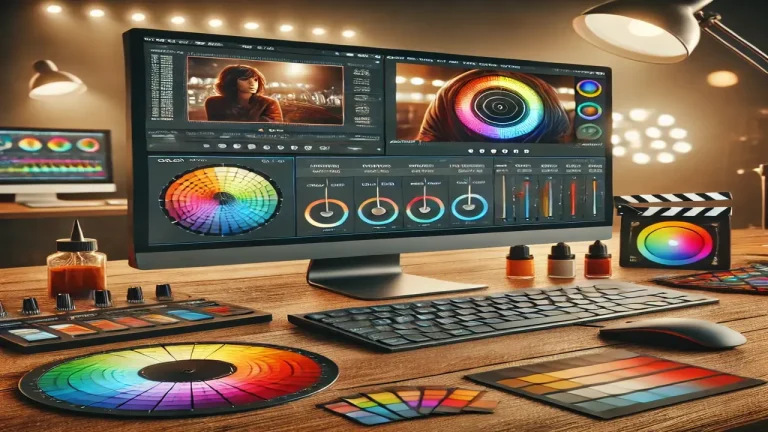Cut, Trim, Repeat: Basic Video Editing Techniques for Beginners

Video editing is an essential skill for content creators, filmmakers, and anyone interested in producing high-quality videos. Whether you’re editing videos for social media, YouTube, or personal projects, understanding the basic techniques is crucial. In this guide, we’ll focus on three fundamental video editing techniques: Cut, Trim, and Repeat, which can significantly improve your editing skills and make your videos look more professional.
What Does “Cut, Trim, Repeat” Mean in Video Editing?
Before diving into the techniques, let’s clarify what “Cut, Trim, Repeat” means in the context of video editing:
- Cut: Removing unwanted portions of a video clip to shorten its length or eliminate mistakes. This process helps streamline the content, keeping it focused and engaging.
- Trim: Adjusting the beginning and end points of a video clip to refine its duration. This allows for fine-tuning of each segment, making the video flow smoothly from one shot to another.
- Repeat: This involves revisiting the cut and trim process to ensure every section of the video is polished and perfected. It also refers to reusing clips for added emphasis or to achieve certain creative effects.
By mastering these three basic techniques, you can take your raw footage and turn it into a cohesive and visually appealing video. Let’s explore each one in more detail.
Step 1: The Art of Cutting
Cutting is one of the most fundamental video editing techniques, and it involves removing portions of the footage that aren’t necessary. When you shoot a video, it often contains long, uninteresting segments, mistakes, or off-topic sections. Cutting these parts out can significantly improve the overall quality of your video.
Tips for Cutting Effectively:
- Start with a Rough Cut: Begin by cutting out the most obvious mistakes, such as long pauses, shaky camera movements, or off-topic ramblings. The goal is to create a rough outline of your video.
- Focus on Storytelling: Your cuts should help tell the story or convey the message clearly. Avoid cutting too frequently or in a way that makes the video feel choppy.
- Use Cutaways: When cutting from one shot to another, consider using cutaways to maintain visual continuity. Cutaways are supplementary footage that relate to the main subject but provide a different angle or perspective.
Tools for Cutting:
- Adobe Premiere Pro
- Final Cut Pro
- DaVinci Resolve
- iMovie
These tools provide user-friendly interfaces that make cutting video clips straightforward, even for beginners.
Step 2: Trimming for Precision
While cutting removes large chunks of unwanted footage, trimming is a more precise editing technique. It involves refining the starting and ending points of individual clips to create smoother transitions.
Why Trimming is Important:
Trimming allows you to fine-tune each clip, ensuring that your video flows seamlessly. It helps you avoid abrupt transitions and ensures that each scene starts and ends at just the right moment.
Tips for Trimming:
- Trim Frame by Frame: Most editing software allows you to trim video clips frame by frame, which gives you more control over the timing.
- Avoid Over-trimming: Be careful not to trim too much, as this can cut off important dialogue or actions.
- Use Trimming to Match the Beat: For music videos or videos with a background soundtrack, trim clips to match the beat of the music. This technique can create a more engaging and dynamic video.
Popular Trimming Tools:
- Adobe Premiere Pro’s Ripple Edit Tool
- Final Cut Pro’s Blade Tool
- DaVinci Resolve’s Trim Edit Mode
These tools provide detailed trimming options, allowing you to refine your clips for the best results.
Step 3: Repeat the Process
After cutting and trimming, it’s time to repeat the process as necessary. This iterative approach helps you refine your video to perfection.
What Does Repeating Involve?
- Revisit Each Cut: Go back to each cut you made and evaluate whether it enhances the flow and storytelling. Sometimes, you may need to add or remove more footage to achieve the desired effect.
- Check for Continuity: Ensure that your video maintains visual and narrative continuity throughout. For example, if you’re creating a tutorial, make sure that each step logically follows the previous one.
- Use Repetition Creatively: Sometimes, repeating a certain clip can emphasize a point or create a unique artistic effect. For instance, you can repeat a slow-motion clip to build suspense or add humor.
Refining the Details:
- Transitions: Add transitions between clips, such as fade-ins or cross-dissolves, to smooth out any abrupt cuts.
- Audio Sync: Make sure the audio aligns with the visuals. You may need to cut or trim audio clips separately to match them to the video.
- Color Correction: Adjust the color settings to create a consistent look across all clips. This step can make a big difference in the overall quality of your video.
Additional Techniques to Enhance Your Editing
While “Cut, Trim, Repeat” forms the backbone of video editing, there are several other techniques that can further enhance your videos:
1. Using B-Roll Footage
Incorporating B-roll (supplementary footage) can make your video more interesting and provide context to the main content. For example, if you’re making a travel vlog, include scenic shots or time-lapses to complement your narration.
2. Applying Effects and Filters
Video effects and filters can be used to add flair to your videos. However, use them sparingly to avoid distracting viewers from the main content.
3. Incorporating Titles and Text
Adding text elements such as titles, subtitles, or lower thirds can help provide additional information or context. Make sure the text is easy to read and complements the overall style of the video.
4. Sound Design
Don’t underestimate the power of audio. Good background music and sound effects can elevate your video from average to amazing. Make sure to balance the audio levels, so that the background music doesn’t overpower the main dialogue.
Choosing the Right Software for Basic Video Editing
To get started with basic video editing, choose an editing software that suits your needs and skill level. Here are a few recommendations:
- For Beginners: iMovie (Mac), Windows Video Editor (Windows), and HitFilm Express
- Intermediate Users: Adobe Premiere Elements, DaVinci Resolve, and Filmora
- Advanced Users: Adobe Premiere Pro, Final Cut Pro, and Avid Media Composer
Each software has its own set of features, so explore them to find out which one you are most comfortable with.
Conclusion
Mastering the basic techniques of “Cut, Trim, Repeat” is essential for anyone looking to improve their video editing skills. By focusing on cutting out unnecessary content, trimming clips for precision, and revisiting the editing process for refinement, you can create polished and professional videos. With practice and experimentation, these fundamental techniques will become second nature, allowing you to explore more advanced editing techniques.




